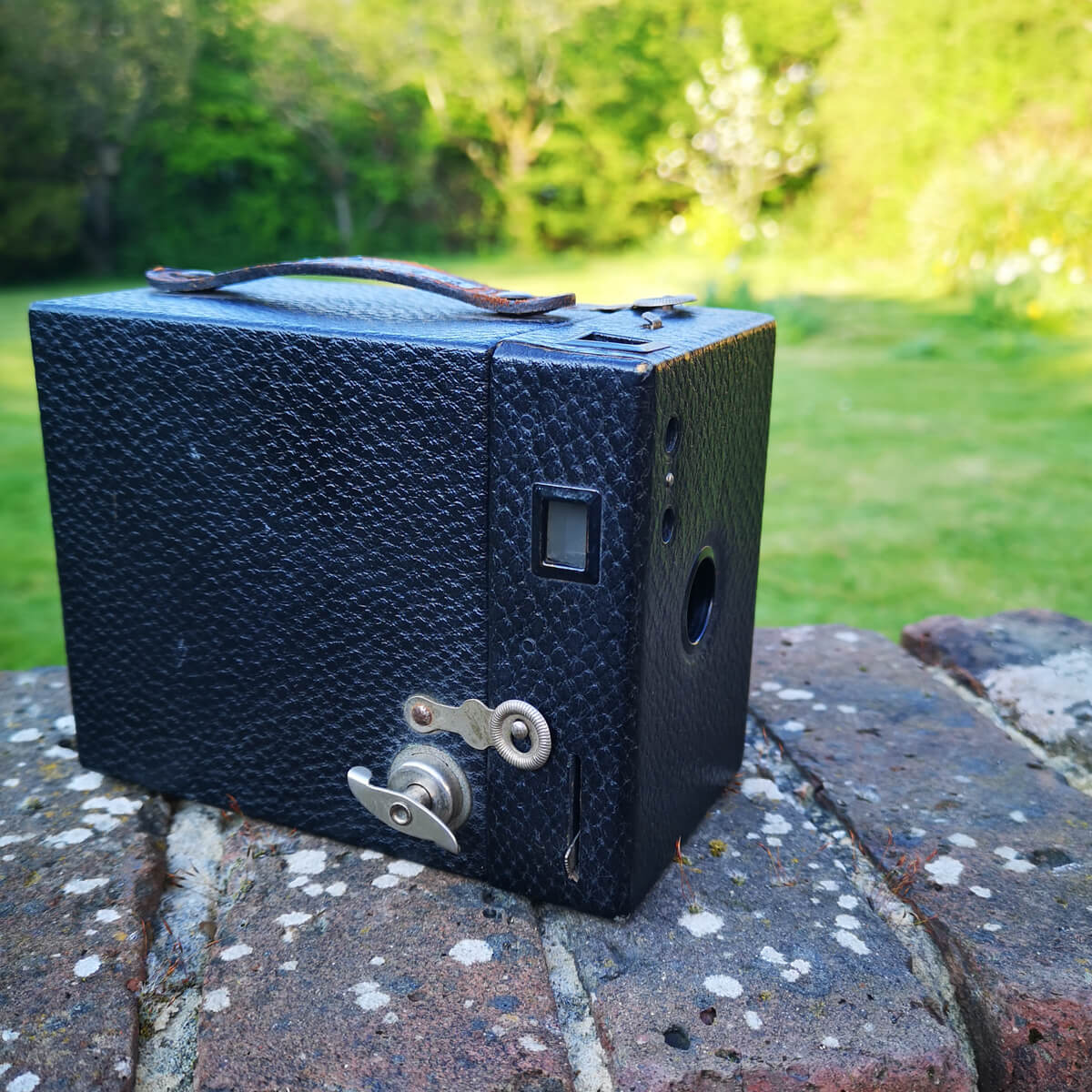Last year’s lockdown left me simultaneously busy with work and also with lots of time stuck at home I would not have normally had. The up and downsides of the new lockdown lifestyle. One of the advantages of this was it gave me a bit of time to sort through some old cameras I’d been given and run a roll of film or two through them.
One that caught my eye as something a bit unusual was a British-made early 20th-century box camera. I initially identified it as a Kodak Box Brownie but on further research turned out to be a Kodak Hawkeye No 2 Model B. They were produced in London from 1913 until the early 1920s so mine is probably over a century old.
It’s a very simple camera, a box no less, with a single meniscus lens (that needed a lot of cleaning), two view finders – probably more accurately described as “indistinct blob finders” that seemed no better even after cleaning – and a simple spring shutter that I guess is about 1/40th of a second.
That’s it, no aperture adjustment or film speed control. Just a box, a lens, a shutter and a simple film transport system.
I had an expired 120 roll of the original Fujifilm NEOPAN 100 ACROS going spare so that was loaded, and I took a walk round the south of England village where I live to take a few snaps. I developed the film in my normal way using Ilford’s LC-29 one-shot developer, assuming box speed to be 100 despite it being over a decade out of date. Not that it mattered, there was no way of making any adjustments on the camera and the shutter speed was fixed at whatever it was.
Surely something so simple and so basic wouldn’t be able to produce anything usable?
The large 6×9 negatives were clear and bright but the images had a dreamlike, another time, another place quality. The first picture below — of the lane leading to the village church where countless people have walked to weddings, christenings and funerals — looks as it was in the 19th century, not the 21st.
The church itself (#2) framed by ancient trees (bear in mind seeing anything through the simple viewfinders is a definite challenge). Finally, the preserved signal box and trains of the disused railway station look ready to haul passengers to London once again. Even the dumping ground at the bottom of my garden looks pleasant, helped by the cherry blossom no doubt.
Is it an everyday camera? Certainly not, but a wonderful glimpse into the past with one of the cardboard boxes that opened up photography to the masses.
~ Simon
Submit your 5 Frames… today
Get your own 5 Frames featured by submitting your article using this form or by sending an email via the contact link at the top of the page.
Share your knowledge, story or project
The transfer of knowledge across the film photography community is the heart of EMULSIVE. You can add your support by contributing your thoughts, work, experiences and ideas to inspire the hundreds of thousands of people who read these pages each month. Check out the submission guide here.
If you like what you’re reading you can also help this passion project by heading over to the EMULSIVE Patreon page and contributing as little as a dollar a month. There’s also print and apparel over at Society 6, currently showcasing over two dozen t-shirt designs and over a dozen unique photographs available for purchase.














One response to “5 Frames… On original Fujifilm ACROS with a century-old Kodak Hawkeye No2 Model B (120 Format / EI 100)”
It appears this camera is not 120 film. But the spool looks similar.
So 120 fit.
Excellent as I will use some in my camera just like this.